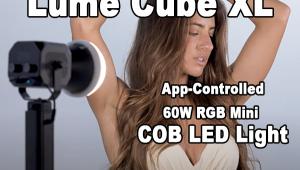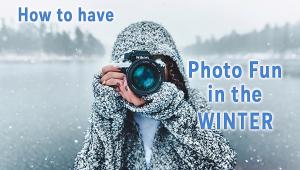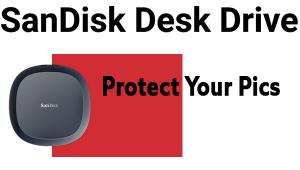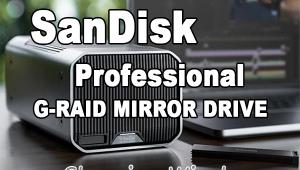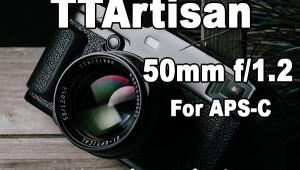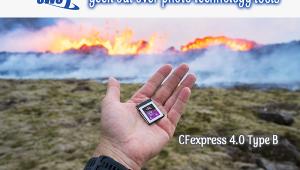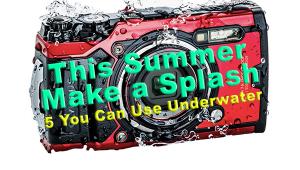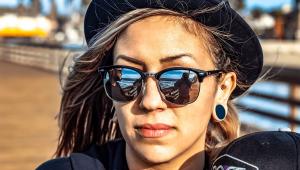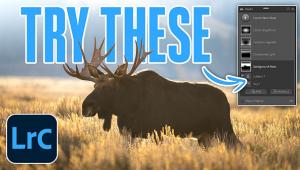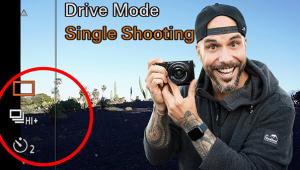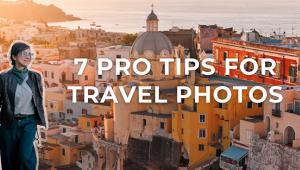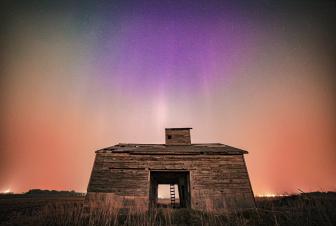Our Favorite Photo Bags & Camera Backpacks For Travel Photography

“What do you get a photographer that has everything? A bag to put it in.”—Old joke
When a photographer leaves the studio to go on location, they need to start packing. It doesn’t matter whether you’re slinging gear into a Range Rover or a baggage handler is stuffing it inside an Airbus, you need tough, dependable bags and cases that are up to the job. How do you pick the bags and cases that hold your equipment? Like green bags? Prefer anonymous bags? Want a hard case? What about wheels? The answer to these questions and more are found in this month’s installment of “One Case to Schlep.”
To paraphrase Shakespeare, “there are more camera bags in heaven and earth, Horatio, than are dreamt of in your philosophy.” To find products for Geared Up, I attend trade shows and solicit suggestions from readers and colleagues. That’s why the following are not just my favorites but include those from other Shutterbug writers and staff.
Traveling Light
Weight is always an issue for the backpacking photographer, so lightening the load is a great idea. MindShift Gear’s UltraLight series includes the Sprint 16L ($119), Dual 25L ($169), and Dual 36L ($199) packs that have side-panel designs to provide easy access to cameras, lenses, and accessories without removing the bag. The packs have zippered storage for personal belongings, a hydration reservoir, an integrated tripod mounting system, and “breathable” shoulder straps. The Dual 25L and Dual 36L have a removable camera compartment with a shoulder strap allowing it to be worn separately. All exterior fabric has a water-repellent coating with a polyurethane-coated underside. The backpacks use YKK Fuse zippers, 100D nylon shadow rip-stop, 420D high-density nylon, 210D velocity nylon, 320G UltraStretch mesh, and a nylon webbing that’s stitched together with three-ply bonded nylon thread. If you don’t think thread is important, you’ve never had a backpack fall apart because of inferior thread. I have. Interiors use 200D polyester, high-density closed-cell foam, and that three-ply bonded nylon thread.
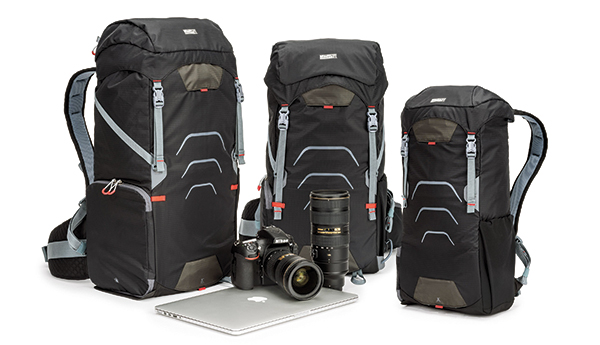
Who’s It For: The UltraLight Dual 36L is for full-sized digital SLRs shooters; the Dual 25L is for photographers using standard SLRs and larger mirrorless bodies, like my Panasonic Lumix GH4; and the Sprint 16L is for shooters of compact SLRs or mirrorless cameras.
Why I Like It: The heaviest bag weighs 3.3 pounds, the lightest is 1.9 pounds, and they look sharp, too.
Clik Elite’s Pro Elite is a heavy-duty but affordable ($119) pack that holds two digital SLRs, seven to eight lenses, and a laptop. It’s made from water-resistant Cordura nylon and has a rainfly to offer protection from wet weather. The pack accommodates a tripod within its own sleeve and centered on its back. Inside there are dividers and lens cradles to organize your equipment. There’s room within its top and side pockets for batteries, cables, and memory. The lid holds accessories, without having to open up the pack. The shoulder harness is adjustable and has a chest strap for extra stability. There’s also a padded waist belt if you like that sort of thing.

Who’s It For: Outdoor photographers who want a useful backpack without having to mortgage the farm.
Why I Like It: Shoulder straps are a bag’s most overlooked feature and many look good but how well do they stay on your shoulder when the case is loaded? Clik Elite has that covered.
New Designs
Manfrotto’s Pro Light RedBee-210 Backpack ($179) can hold two camera bodies and a 400mm lens. Because of a flexible internal divider and rear access, you can configure gear in a way that works best for you. Underneath the rear lid is a padded laptop sleeve and numerous pockets for doodads. A zippered mesh system, attached to the back panel, keeps camera gear separate from laptops, tablets, and other gizmos. The RedBee-210 Backpack provides multiple access options: For quick-draw shooters there is side access but there’s top access, too, along with a chest connector and a quick-release waist belt. Made from rip-stop nylon, the pack has an external tripod connection and a rain cover.

Who’s It For: Shooters looking for a clever and well-crafted pack that kicks traditional photo backpack design up a notch.
Why I Like It: The Manfrotto bags I’ve seen in the past were beautifully tailored and this looks that way as well.
Mountainsmith’s Descent Camera Sling Pack ($99.95) features a clamshell design that lets you swing the pack around to the front to access a digital SLR with a lens attached, a 70-200mm f/2.8 lens plus two other lenses and accessories. Gear rests between padded interior dividers inside a padded main compartment. The Descent can hold an iPad mini or similar-sized tablet inside a slip pocket within a zippered pouch. For small accessories, the front zippered pouch has an interior organizer with pen slots and a key leash. There’s a padded, adjustable left shoulder sling strap and a quick-release strap along with three (count ’em) padded handles, on the top, side, and at the base. The pack has a removable rain cover and two interior mesh pockets with red and green zippers for separating used and new batteries.

Who’s It For: Outdoor photographers who need an affordable daypack for short hikes.
Why I Like It: I like the color-coded zippers; too bad others don’t copy this idea.
Going Ape
I remember Ape cases from a long time ago (in Internet years) and still have a small case used to hold automotive tools when competing at the track. The Ape Case ACPRO3000 Maxess DSLR Backpack ($114) has two compartments and their hi-vis yellow interior makes it easy to find stuff inside. Padded dividers let you customize the backpack to accommodate gear, including one or two camera bodies, three to four lenses, and a speedlight, with room for additional equipment in a bottom zippered compartment. A front zippered pocket can hold a tablet or slim notebook and there’s a side pocket for small accessories like batteries, memory cards, and a phone. You get to your gear through side or bottom back access or through the top. Zippers have large loop pulls for one-hand operation. Straps feature loops and d-rings for a monopod or tripod, a water bottle, and a flashlight. A built-in retractable any-weather cover is stored in a bottom pocket.

Who’s It For: Bargain-hunting backpacking photographers who clearly want style and value.
Why I Like It: It’s hard to find a better-made backpack for the money and the yellow interior is a big plus. Cases with black or blah interior fabric are so last millennium.
The Classics
While camera bag fads come and go, the classic simplicity of Jim Domke’s designs are timeless. I remember taking one of his first series of bags to photokina 1978 and that bag, like its successors, lasted a long time and remains one of the standards by which shoulder bags are measured. And like Star Trek, we are now into the Next Generation. (Original Heritage designs remain in the lineup.) The Crosstown Courier ($169), aka grandchild of the classic F-5XB, is part of the Metro Series of satchels, courier, and messenger bags. It’s available in Cordura or RuggedWare, which is a cotton-based fabric impregnated with natural waxes and oils to resist inclement weather but lets the fabric breathe. The main compartment has a customizable insert that holds a digital SLR with a lens, an additional lens or speedlight, and is accessible via a dual zipper at the top. It also accommodates a 9.7-inch tablet inside a padded, zippered sleeve underneath the front flap.

Who’s It For: Traditional-minded photographers who value understated looks, rugged construction, and simplicity of operation.
Why I Like It: The RuggedWare bag looks anonymous and amazing all at the same time, especially in black.
Billingham takes the classic shoulder bag and constructs it using build standards that value ruggedness and beauty over cutting corners to hit a price point. Their Hadley Pro Shoulder Bag ($259) holds a digital SLR with an attached lens, such as a 70-200mm f/2.8, and a speedlight between padded, touch-fastened dividers within a removable camera insert. The bag has dual expandable slip pockets at the front and a rear zippered pocket for accessories. The top front features a rain flap that’s secured by hand-finished leather straps. You can carry the bag using the adjustable shoulder strap or a top grip handle. A row of brass studs lets you increase or reduce each front pocket’s capacity and provides a convenient place to store Sharpies. An interior divider atop the camera insert protects gear from rain or snow.

Who’s It For: Traditional photographers who want impeccable build quality and understated and unmistakably British style.
Why I Like It: Built to a standard, not a price point. Rugged yet elegant. If Domke is the Land Rover of camera bags, Billingham is the Bentley.
Messenger Bags
Tenba’s Messenger DNA bags have all the functions of an everyday bag combined with a camera bag along with the ability to use it while riding a bicycle. The bag is made from 600-denier Helix fabric with a water-repellent coating. The front flap extends over the top of the bag and has a hinge to provide extra coverage at the corners. The bag has a removable rain cover, too. Messenger DNA bags are available in two sizes: The DNA 11 ($105) accommodates a mirrorless camera with three to five lenses or a digital SLR with two to three lenses, plus accessories. A rear-padded sleeve stores an iPad or an 11-inch MacBook Air. The DNA 15 ($119) holds a pro SLR with two to three lenses (with an attached 70-200mm f/2.8), a speedlight, and audio gear. It has two padded interior sleeves: one for a laptop up to 15 inches and another for an iPad.
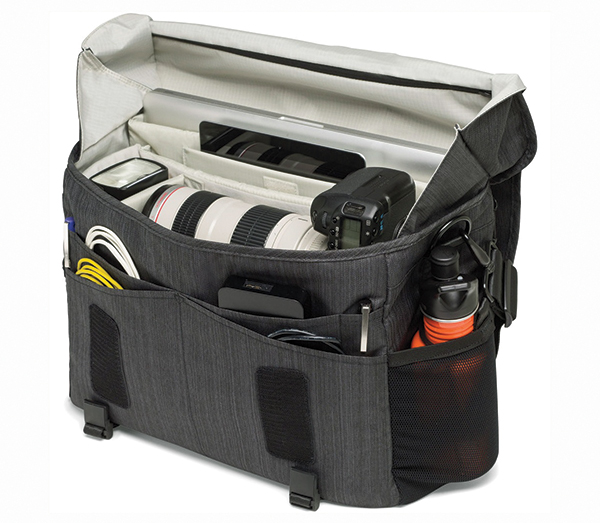
Who’s It For: Younger, on-the-go photographers who want a bag to match their lifestyles.
Why I Like It: I’ve seen other camera/messenger bags before but these two are the first ones I think that deliver the goods as camera bags as well.
Vanguard’s Havana 33 Messenger Bag ($89) holds an SLR with an attached lens, extra lenses, a speedlight, and accessories. The bag features a zippered main compartment covered by a large flap with two quick-release straps. Inside is a removable padded insert with two removable padded dividers. There’s a slip-in pocket for storing a 13-inch laptop computer. The front wall has a sewn-in pouch with two clear memory card pockets. The bag’s interior is made from light gray 150D polyester. An exterior front flap features a zippered pocket for storing a smartphone, wallet, and other items. Inside this pocket is a key lanyard and a removable rain cover. Each side of the bag has a slip-in pocket for holding a water bottle, gloves, or whatever and closes with a fabric cover. The Havana 33 can be carried by its top handle or adjustable, padded shoulder strap. For traveling with rolling luggage, the back of the bag has a handle pass-through strap.

Who’s It For: Messenger/camera bag for budget-minded shoppers.
Why I Like It: I like its funky, world traveler looks.
Bags don’t have to be large (or expensive) to be useful. Case in point: Peak Design’s The Field Pouch ($39). Its waxed 500D Kodra shell with DWR coating repels water and has a rolltop closure to keep out dust and moisture. It’s really an expandable pouch for mirrorless cameras and lenses as well as cords, accessories, batteries, and hard drives. You can wear it on your belt or attach any Peak Design strap to turn The Field Pouch into a lightweight sling bag. It also includes an attachment point for Peak Design’s Capture clips ($59) that let you carry your camera on any strap, belt, or bag. The clips are made from aluminum and glass-reinforced nylon and have a quick-release locking action that’s compatible with ARCA tripods.

Who’s It For: Mirrorless camera shooters who want their bags to match their gear’s light weight.
Why I Like It: Nice price, nice style, what’s not to like?
The Ultimate In Protection
If I’ve been using automobile analogies to describe these cases, Pelican is the Hummer of camera cases. Their 1510 Carry-On Case ($157) is an unbreakable, watertight, airtight, dustproof, chemical-resistant, and corrosion-proof hard case used to carry any gear that needs protection from everything—even zombies. My wife has one she uses to carry samples of her company’s products and while it has many battle scars, the sometime fragile samples always arrive unscathed. The case is made from high-impact structural copolymer and has a 6.4mm neoprene O-ring, with an automatic purge valve for equalization after changes in atmospheric pressure. It has a temperature rating from -10 to +210 degrees F. The interior consists of an egg crate upper section, a pick ’n pluck foam section, and a one-inch blank bottom section. It has a hinged case with double ABS latches that seal perfectly and padlock protectors that provide added strength and security against theft. The 1510 has long side handles, a long front handle, a retractable extension handle, and strong polyurethane wheels with stainless steel bearings. It “meets current FAA requirements for carry-on luggage.

Who’s It For: Location photographers looking for the ultimate in protection.
Why I Like It: When it comes to cases, Pelican is a noun that’s synonymous with indestructible.
Joe Farace has always loved traditional camera bags but also likes new high-tech backpacks and totes his gear in both kinds of bags/packs. Because this changes over time, if you’re curious about the specific bags he uses, please visit joefarace.com and mirrorlessphototips.com and click the Gear button.
- Log in or register to post comments

